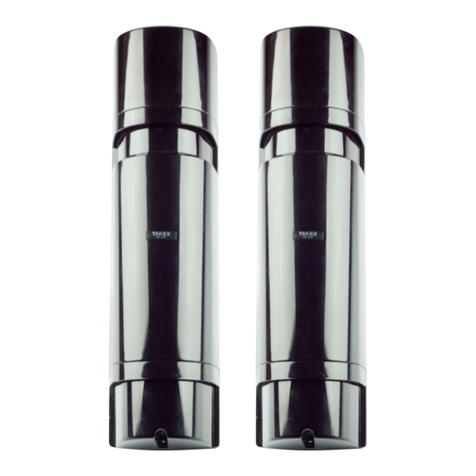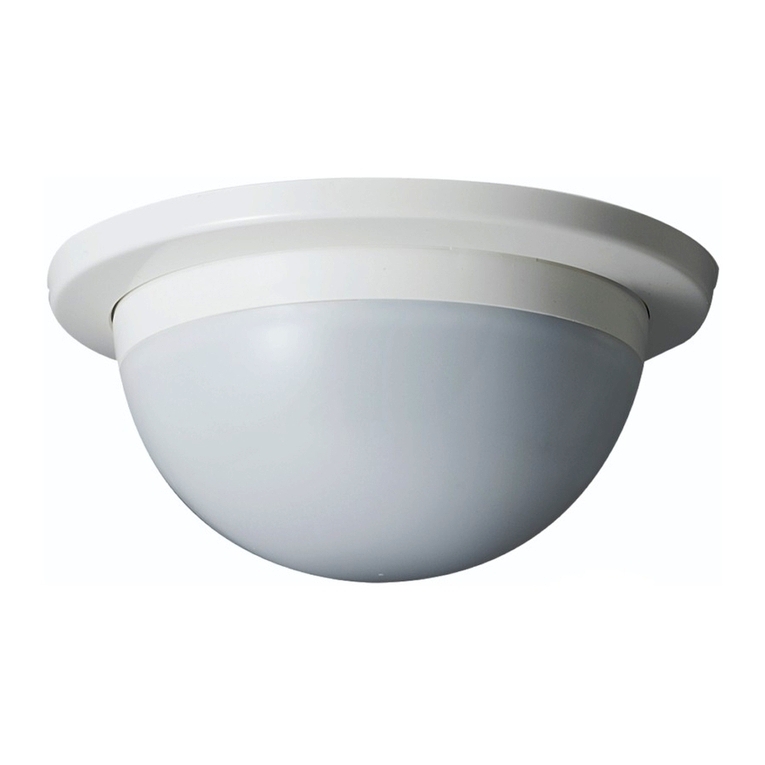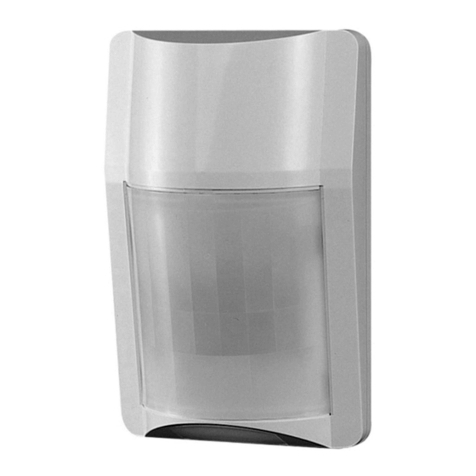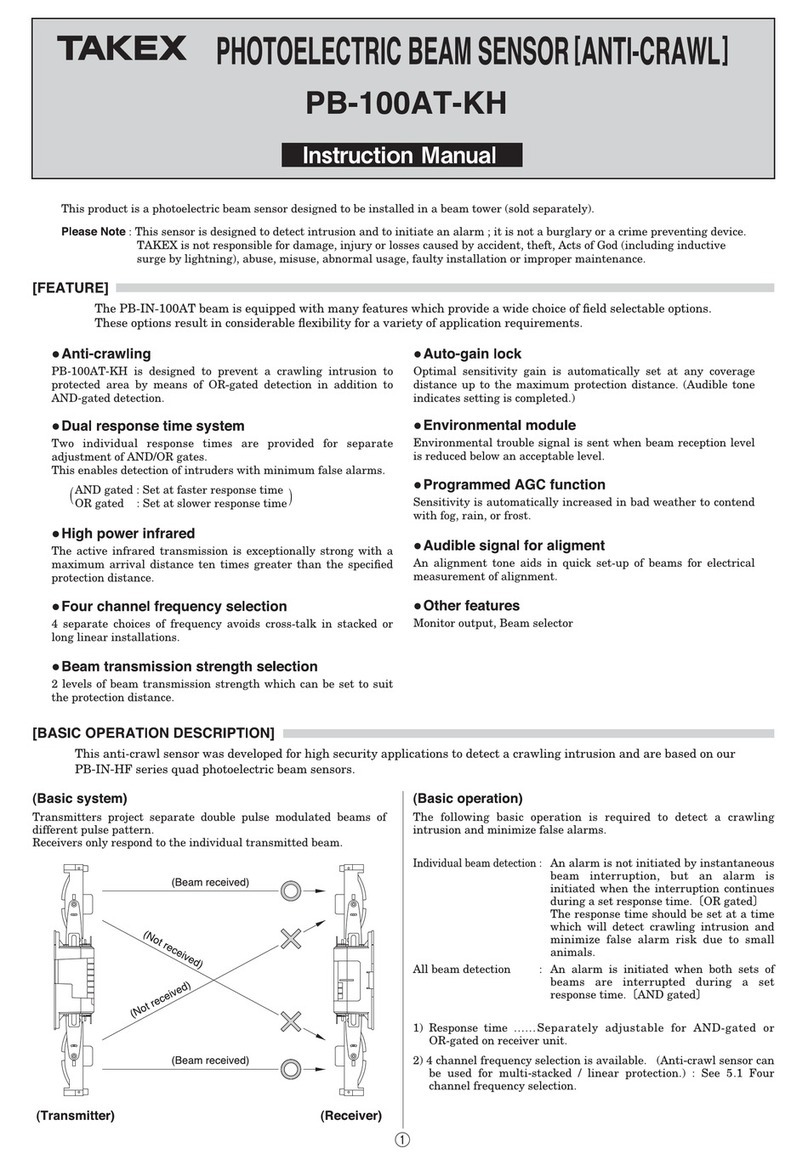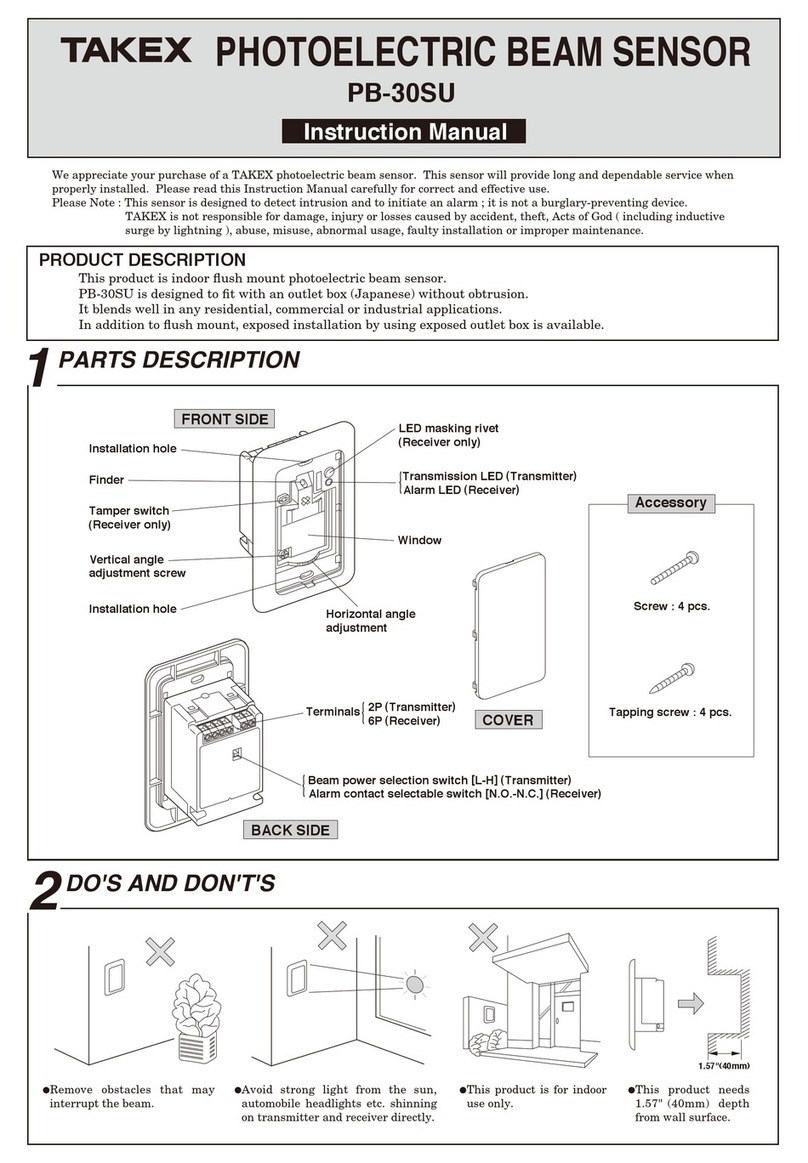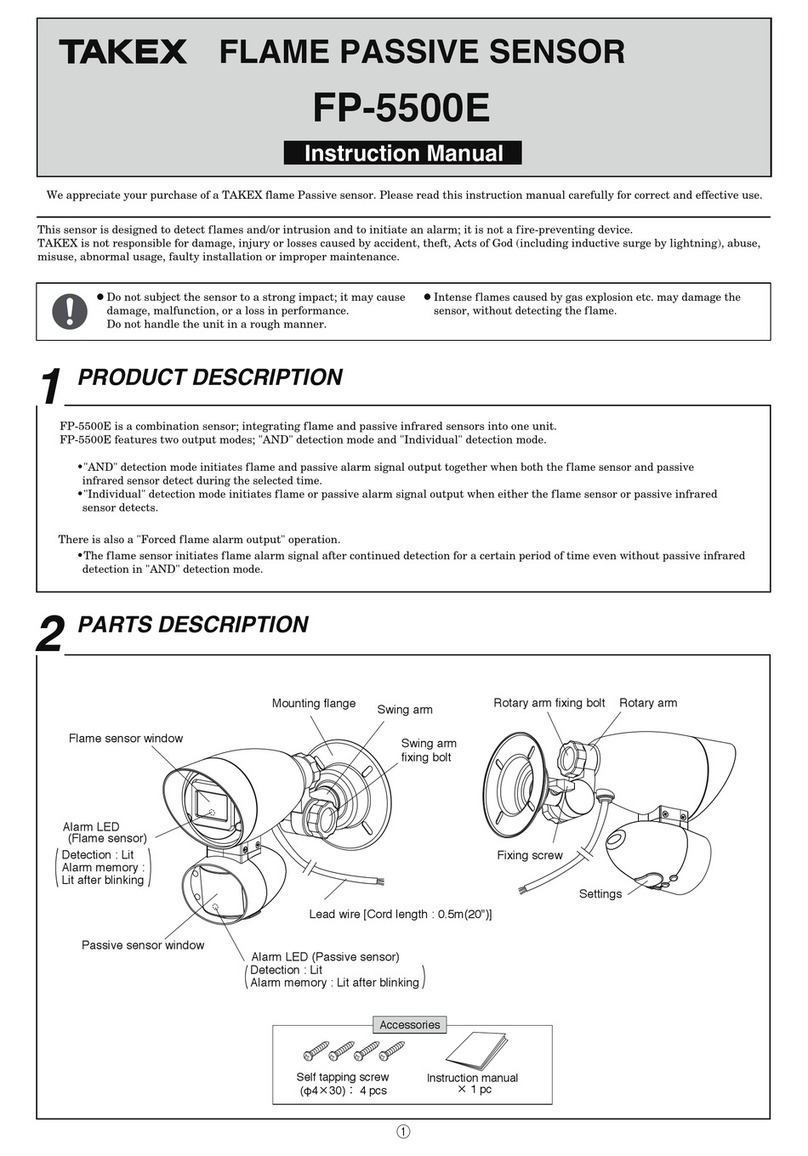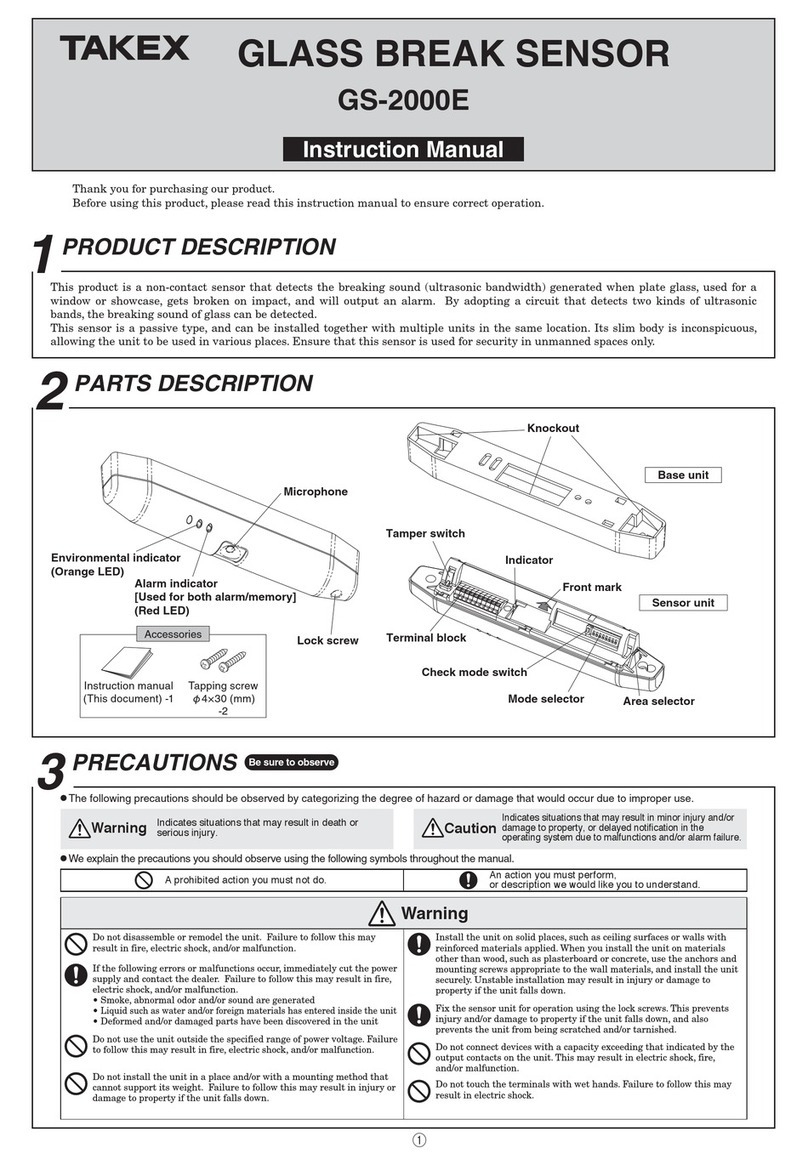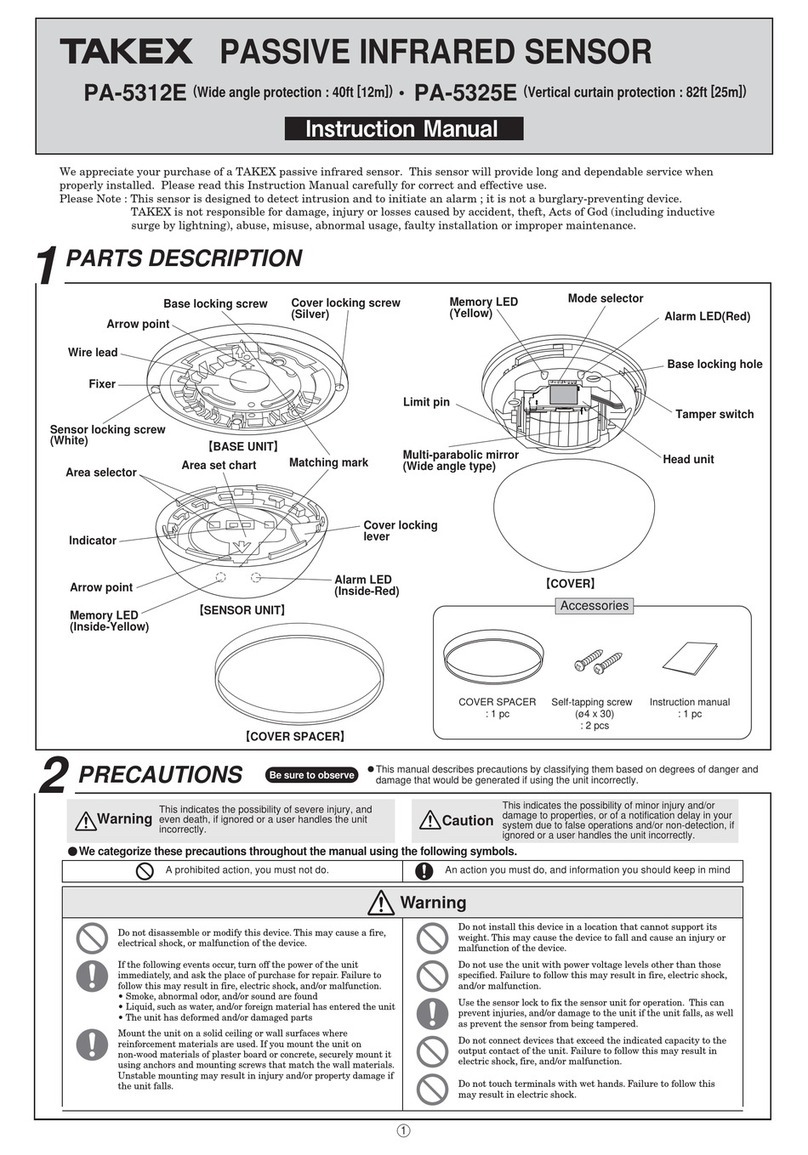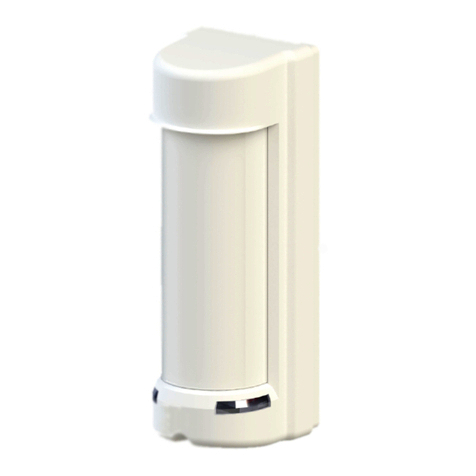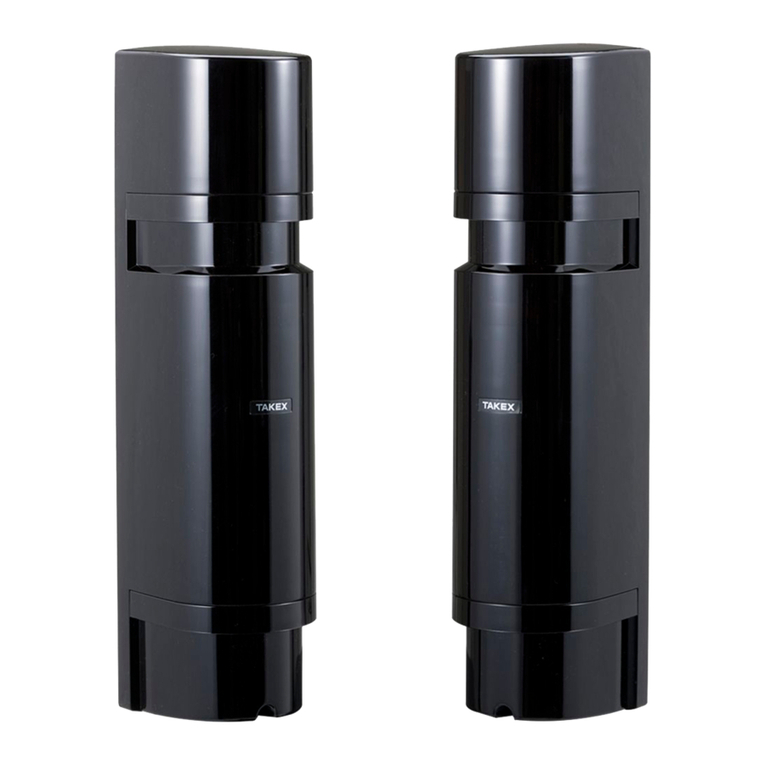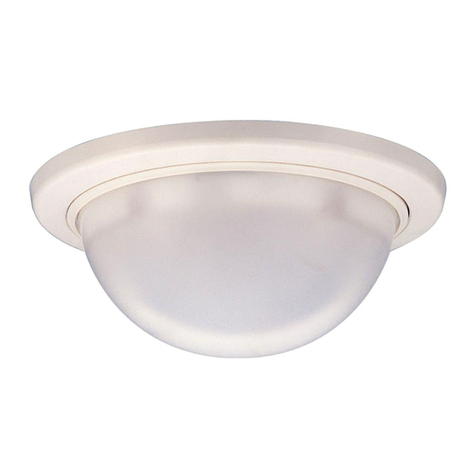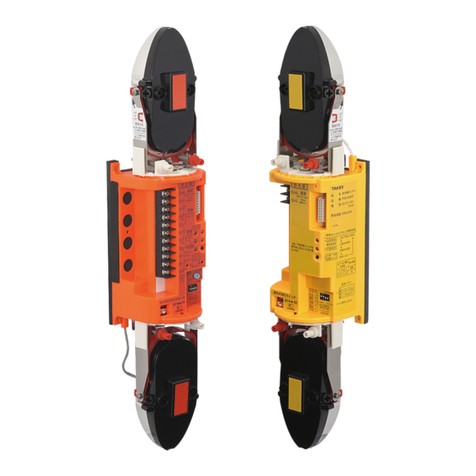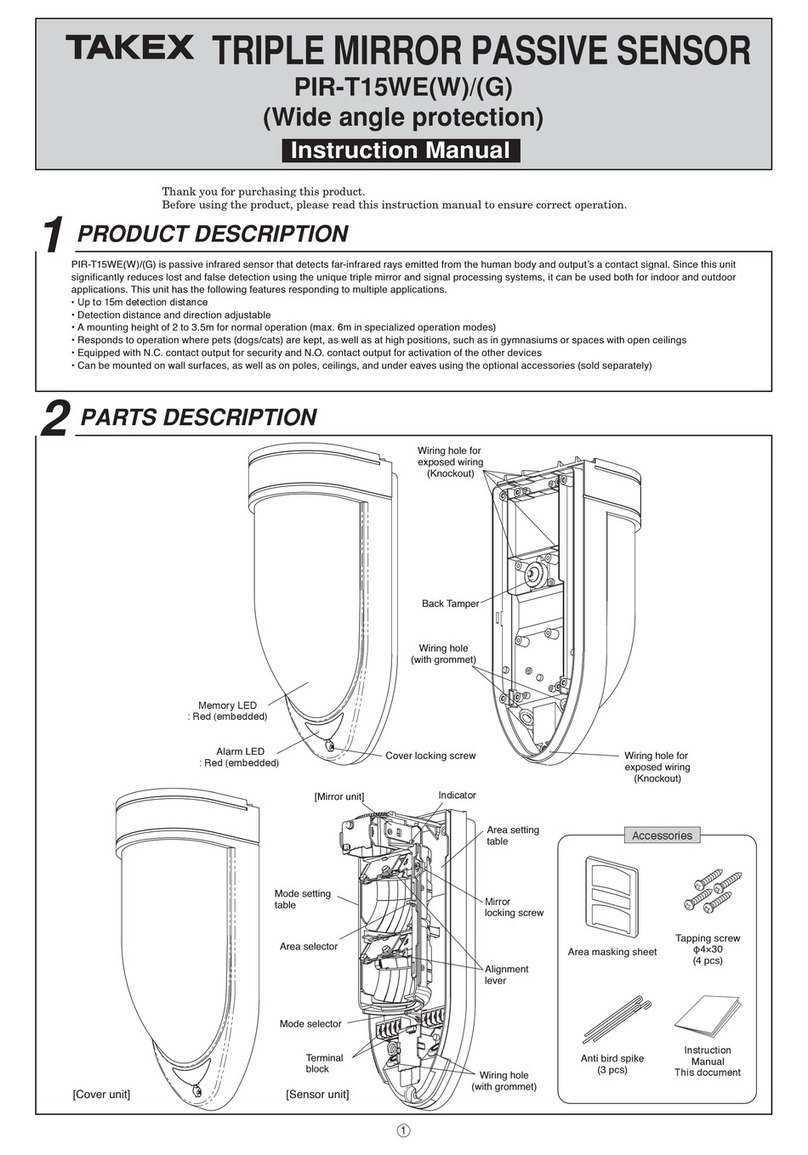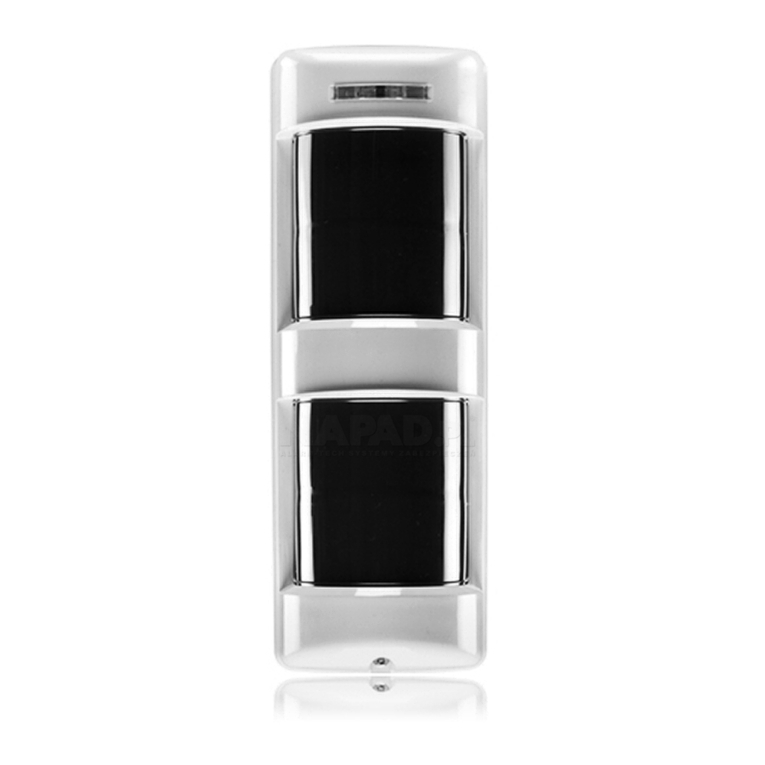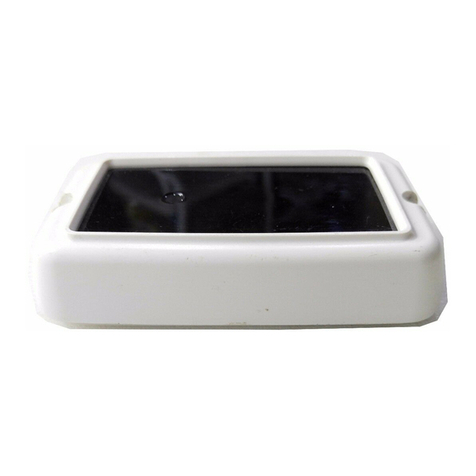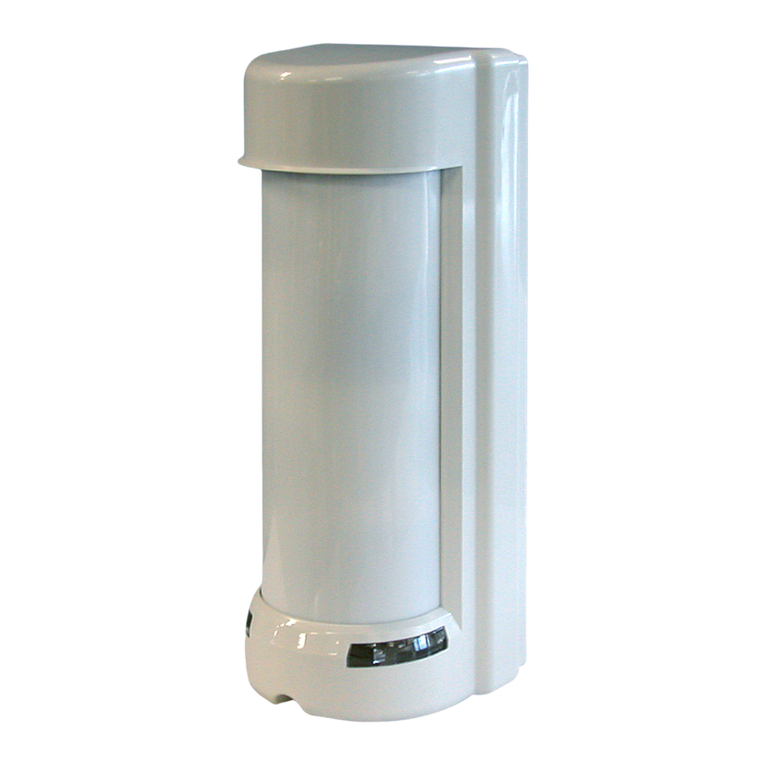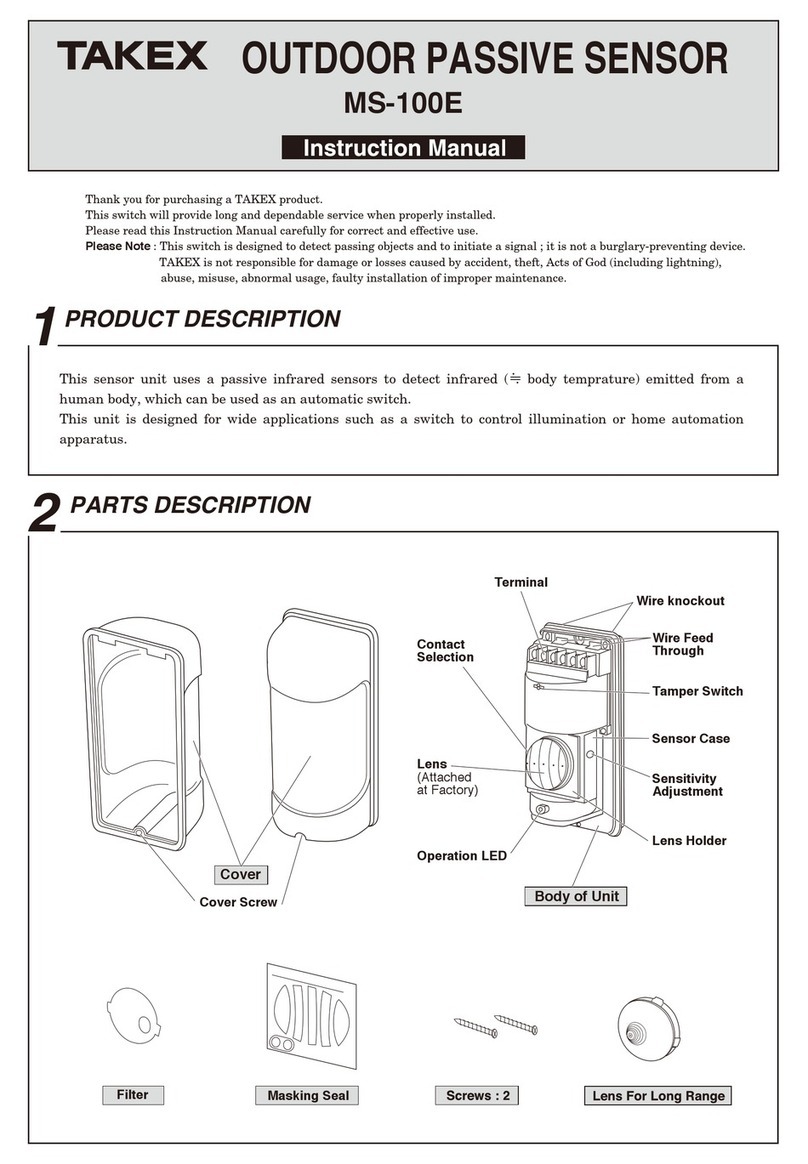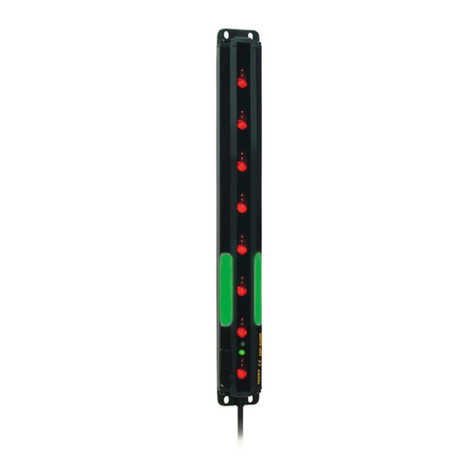
4
Caution
Do not apply impact to the unit.
Strong impact may result in performance deterioration
and/or damage to the unit.
The unit may not operate properly near devices that
generate a strong electric or magnetic field.
Also, devices near the unit may not operate properly
due to the magnetic field and/or magnetism generated
from the unit.
Make sure to confirm before operation.
When branches, leaves of trees and weeds around the
detection line blow in the wind, they may interrupt the
detection line and result in false detection.
Periodically trim (cut) branches leaves, and weeds.
Vine plants may entwine the unit when growing, which
may result in false detection.
Periodically trim them.
For multi-level protection, use the upper and lower
sensors with the same rated protection distance, and
set the same frequency channel for both sensors.
Failure to follow this could result in false and/or
non-detection.
Securely conduct installation work according to the
instruction manual.
Also, make sure to use the supplied accessories and
specified components.
Failure to follow this may result in injury and/or
property damage in the event of fire, electric shock or
fall of the unit.
Install the unit straight so that it does not look inclined
from the front.
Make sure to perform a sufficient operation check on
the whole system before operation.
Do not use the transmitter and receiver of different
model numbers together.
Failure to follow this could result in false and/or
non-detection.
Do not use models other than this series (TXF-125E) on
the extention of the same detection line.
Failure to follow this could result in false and/or
non-detection due to interference between the sensors.
Do not install the unit in places subject to oil smoke,
steam, high humidity, and/or a lot of dust.
Electricity that travels through these substances may
result in fire, electric shock, and/or false operation.
Avoid mounting, battery connection, and battery
replacement where humidity is high.
Humidity may enter the unit and generates
condensation, which could result in malfunction.
Do not touch connector sections and batteries with wet
hands, which could result in electric shock and/or
corrosion.
Make sure that batteries are not heated, when
removing them.
Use the lithium-metal primary batteries for this unit.
Handle them as dangerous goods for transport by air,
observing the IATA Dangerous Goods Regulations in
terms of packing, marking and labeling.
When disposing batteries, observe regulations in force
of each country.
For replacement of batteries, use the batteries specified
in the instruction manual.
If you use different batteries, specified performance will
not be met.
The battery life is just a reference when used at the
normal temperature, and it is not the guaranteed
value.
Before actual installation, perform a sufficient
operation check in a place of operation and confirm that
the receiver can clearly receive the beams.
Installing the unit in location where direct sunlight,
headlight of vehicle, IR illumination or LED light
directly enter the optical axis may result in false and /
or non-detection.
Installing the unit in the following places may result in
false and/or non-detection.
s0LACESSHIELDEDBYTREES
s0LACESWHERETHEREARELIGHTREFLECTINGOBJECTSONTHE
ground on the optical axis
s0LACESWHEREMOVINGOBJECTSSUCHASLAUNDRYSHIELD
the light in the optical axis
s0LACESTHATAREUNSTABLEANDPRONETOVIBRATION
s5NEVENPLACES
s0LACESSUBJECTTOPOLLUTEDWATERSEAWATERANDOR
chemicals
s0LACESWHERESMALLANIMALSMAYPASSSUCHAS
directly above fences
s0LACESCLOSETOFENCES
s)NCLINEDORHORIZONTALINSTALLATION
• Installation in areas where
moving objects (the laundry etc)
can obstruct the optical axis •Installation on uneven
ground
• Slanted installation • Installation close to a wall
• Installation directly
above a wall
• Installation in an
unstable, wobbling
location
TXF-125E-KH
Models other than
TXF-125E-KH
•Installation in locations
shaded by trees etc.
•Using TXF-125E-KH
together with other
models
• Installation in locations where
the device may be splashed by
dirty water or direct sea spray.
Installation so that the LED light does not
enter into the optical axis of beam sensor.
Installing IR illumination overlapping
detection line of beam sensor.
Installation in location where strong light such as
sunlight or light from vehicle headlights can directly
enter the optical axis.
Installation so that the LED light illuminates
transmitter side, where LED light is required.
Installing the LED light so that it looks down
from high mounted position, separated form
the optical axis of receiver where LED lights
in parallel with detection line.
Installation so that the optical axis(Receiver)
is adjusted toward an opposite direction of
road, when detection line is set in parallel
with road.
